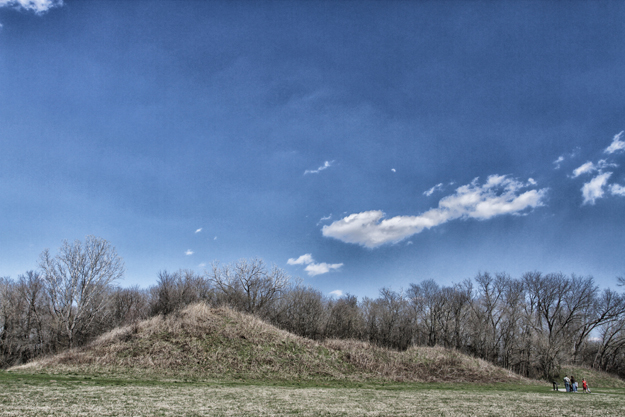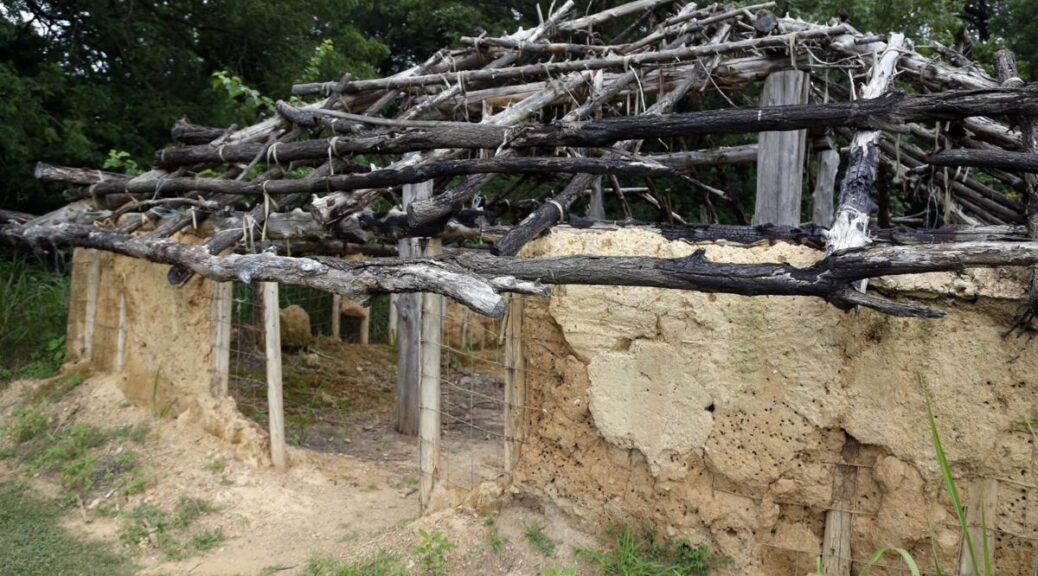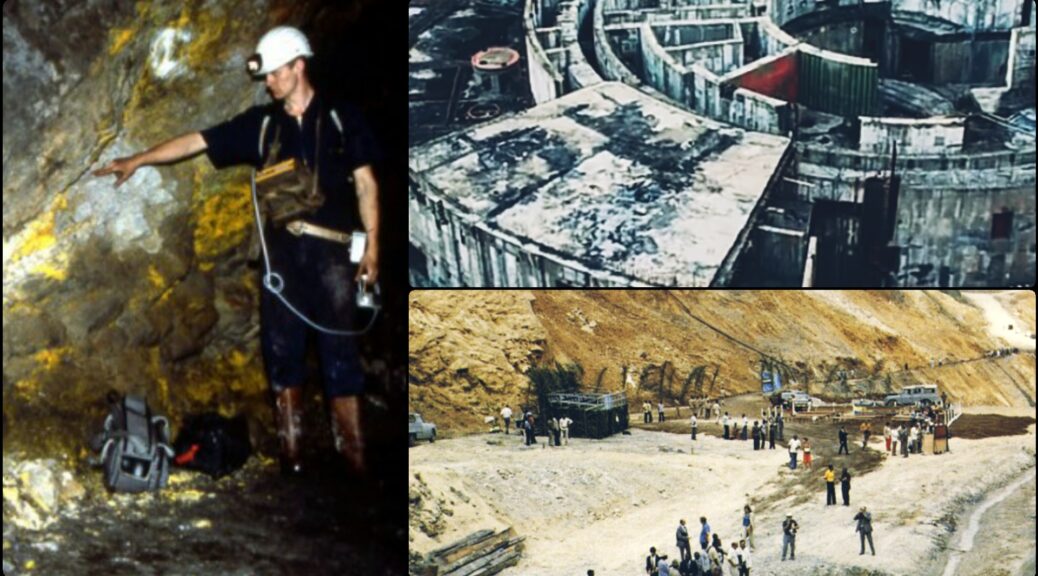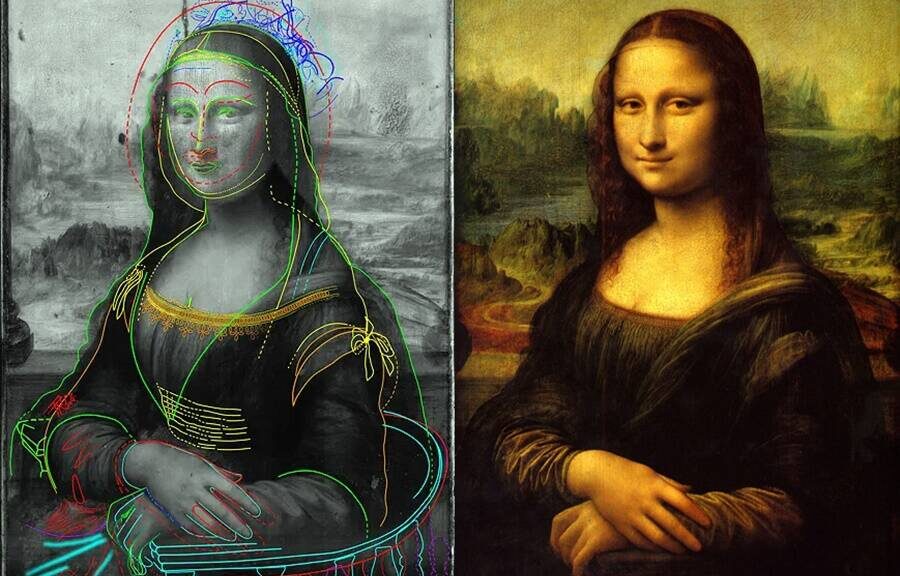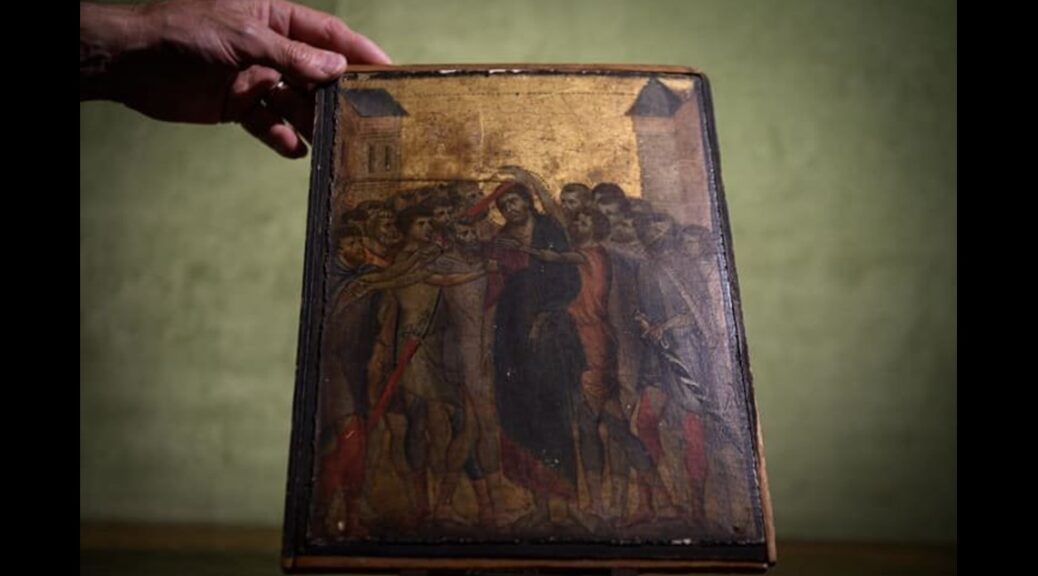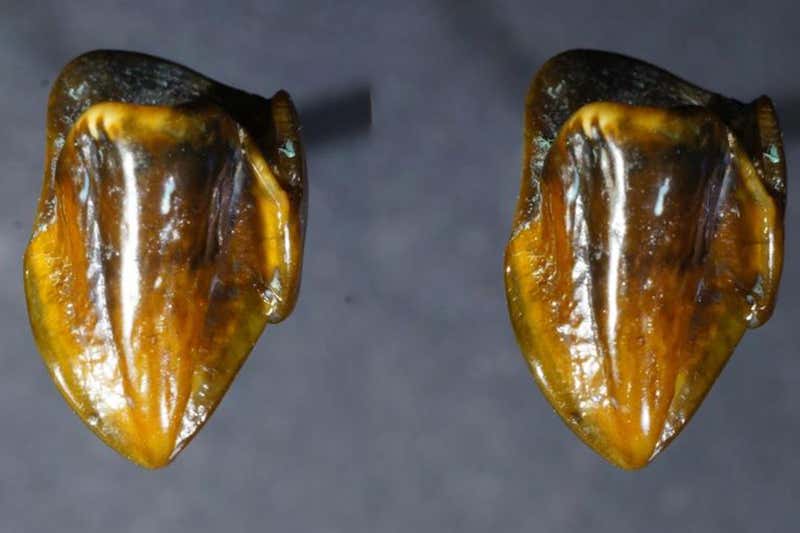An American King Tut’s Tomb of the Arkansas Valley
During the height of its looting in the winter of 1935, the Spiro site—located in northeastern Oklahoma just 10 miles west of Fort Smith—was catapulted to fame by a headline published in the Kansas City Star (December 15, 1935) proclaiming it “A ‘King Tut’ Tomb in the Arkansas Valley.
80 years ago, in 1933, in the depths of the Great Depression, a group of six men – calling themselves the Pocola Mining Company – kicked in $50 each to raise the $300 Evans was asking for a 2-year lease to excavate the mound on the Craig property.
Descendants of the miners say they believed gold was hidden in the mound, stashed by early Spanish explorers who were traveling the rivers of the interior from Colorado, trying to make it to the Mississippi and the sea. The story maintains that the gold was buried in a mound near a river, along with the Indian guides who were killed to keep the secret.
They started with picks and shovels. At first, the relics and skeletons the diggers unearthed from the mound were of little interest. These men were after gold. But curiosity seekers would come by and offer nickel or a dime for an artifact that caught their eye. As word spread, curio hunters came by the mounds to buy up more of the items.
When word of the cache of relics reached Forrest Clements at the archaeology department of the University of Oklahoma, he tried to stop the dig. He attempted to buy out the investors, who were discouraged they weren’t hitting pay dirt. He tried to get Evans to rescind the lease. He lobbied the Oklahoma Legislature to pass an antiquities act to protect the mounds from commercial digs – and there he succeeded.
But not everyone agreed with his idea that the past was public property. The 1930s was the era of the fictional Indiana Jones and the decade after the spectacular unearthing of King Tut’s tomb. Weren’t archaeologists really treasure hunters too?

Clements explained the difference in terms of the greater good: “If the at-present, almost wholly unknown, the prehistory of Oklahoma is to become a matter of scientific record, the archaeological work must be done by formally trained persons and published in the orthodox scientific journals before the relatively few sites have been irretrievably ruined.”
He added a simple assessment, in layman’s language: “Scratching around can never be useful and is always damaging.”
Four months before the Pocola Mining Company’s lease was to expire, the new law allowed Clements to contact the LeFlore County sheriff’s office and file a complaint about the now-illegal digging on Craig Mound. A deputy showed up and told the men they had to stop, under threat of arrest. Clements thrilled that the slow destruction of the mound through shovel and pickax had been stopped, headed to California to teach a course.

Upon hearing that Clements had left the state, the Pocola Mining Company snuck back to the mound to get as much for its investment as it could.
They hired out-of-work miners and decided to speed up their quest to tunnel through to the mound’s center. About 30 feet in, they hit fragments of conch shells, engraved with faces and symbols. Accounts tell of the miners hauling out the decorated shells by the wheelbarrow and dumping them near the entrance, where they were crushed underfoot.
Eventually, the diggers hit a wall of hard-packed earth, 18 inches thick. In his book “Looting Spiro Mounds,” historian David La Vere tells of the moment of discovery and what waited on the other side: “The pick blade broke through into empty space. Immediately there was a hissing noise, as humid Oklahoma summer air rushed into the hollow chamber beyond.” The miners’ lamps revealed one of the most stunning finds in the history of the continent: the largest trove of pre-European-contact artifacts north of the Mexican border, sealed in Spiro Mounds decades before Columbus set foot in the Americas.
What followed was a feeding frenzy. There was neither time nor inclination for photographs or sketches to be made of the layout or holdings in the central tomb. Witnesses tell of beads, pearls and arrowheads spilled across the site, feather capes and elaborate weavings trampled, ancient cedar poles burned as firewood and human bones piled at the edge of the camp, where they soon crumbled to dust.
The Spiro Mounds treasure made headlines nationwide. The New York Times trumpeted the significance of the relics, inaccurately noting that “each item taken from the mound is catalogued and photographed and careful records are being kept.” The Kansas City Star heralded the discovery of a “‘King Tut’ Tomb of the Arkansas Valley.” Soon, other LeFlore County mounds came under attack from relic hunters wielding shovels and driving mule-team-drawn scrapers.
With the burial chamber sacked, time running out on their lease, and Clements due back from California, the Pocola Mining Company decided on one last action. From La Vere’s telling: “In a fit of spite, just to jab their finger in Clements’ eye, they packed the central chamber of the Great Temple Mound with kegs of black powder and touched off a mighty explosion.”
The blast shattered whatever items remained in the chamber, creating a small cave-in and a large crack in the mound and, according to La Vere, “destroyed the Pocola men’s reputation as down-home heroes fighting for their property rights, blowing them instead into the ranks of looters and destroyers.”
The men were eventually arrested, but there is no record of them serving time. The damage was done.
Though the artifacts were priceless, the miners sold them for next to nothing. The money to be made was pocketed not by the workers but by dealers reselling the items to private collectors and museums.
The wealth of secrets lost in their rush to find gold disintegrated as quickly as the crushed fragments of bone and shell. They are now known only to the wind and the earth near the bend in the river where Spiro once ruled.
